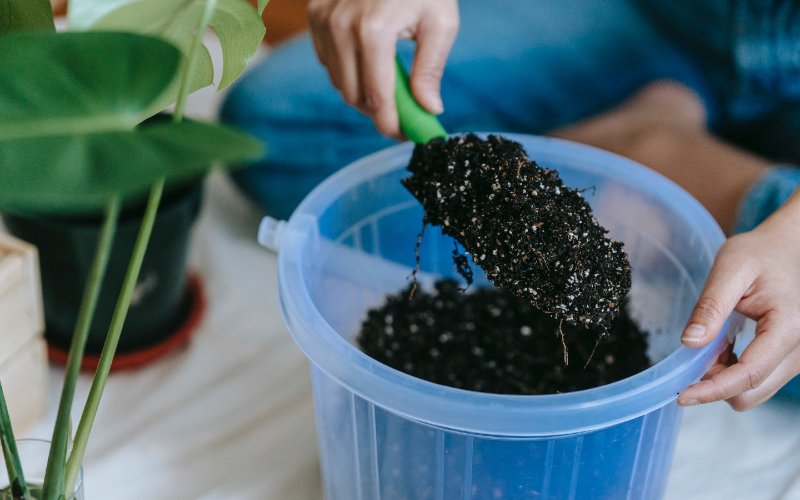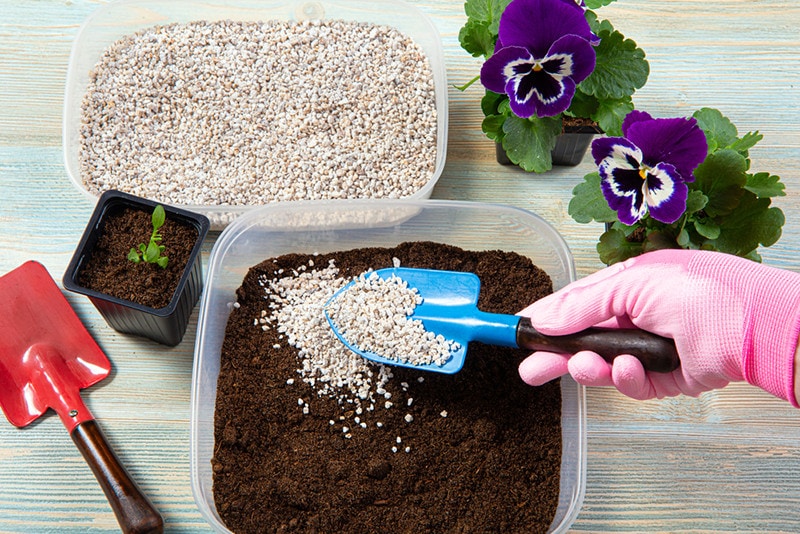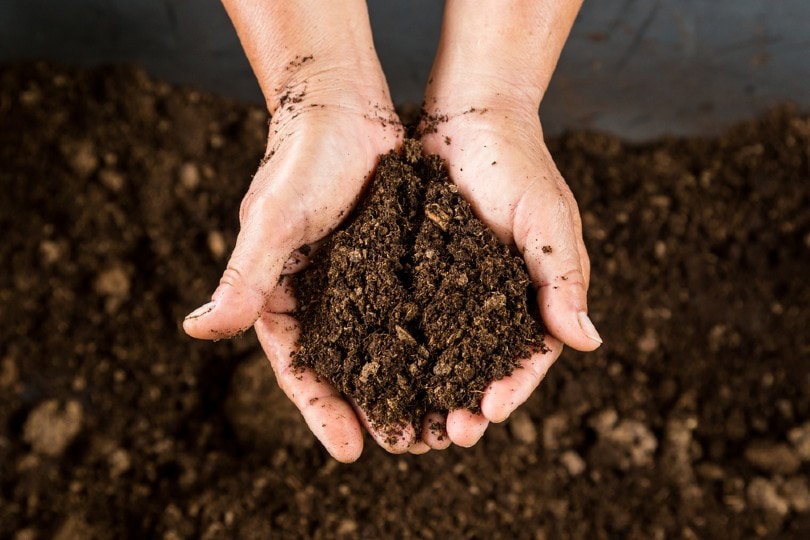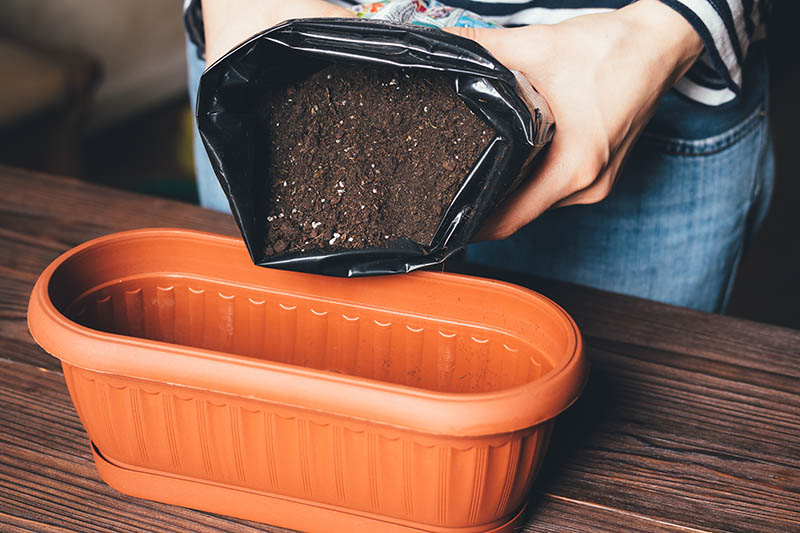How to Make Potting Soil for Peace Lily Plants: 3 Recipes & Expert Tips
-

- Last updated:

Growing plants and flowers in your home requires the right potting soil and technique. After all, soils and mixes are different, and some are better than others depending on the plant’s rooting system and other mineral requirements.
Peace lilies are a classic house plant and beginner-friendly. However, they have clear preferences regarding soil requirements and potting. For starters, peace lilies are not actually lilies; they are a member of the aroids family. They generally prefer balanced soil with excellent moisture retention capacity and good drainage.
In this article, we’ll share all the great tips and recipes for potting peace lilies and other aroids.
What Kind of Potting Soil Is Best for Peace Lilies?
Plants’ roots are vital to the plant’s health. They absorb nutrients and water from the soil and distribute these resources throughout their stems. Peace lilies, also known as Spathiphyllum, are popular houseplants that are excellent air purifiers and simple to grow. If you want your peace lilies to thrive inside your house, you must provide the right soil mix.
Plants thrive in different types of soils, so potting the peace lilies in the right soil mixture is vital. With enough resources and nutrition, they will produce the spectacular bloom of swan-like flowers. An ideal soil mix must satisfy a few key aspects:
- Moisture retention
- Drainage capacity
- Soil pH
- Aeration

Key Factors to Consider for Great Soil
Moisture & Drainage
Peace lilies are always in need of water. They will remain healthy as long as the roots have access to enough hydration. So, the soil should always be wet for the peace lilies to thrive. This way, they’ll produce their stunning white bloom and glossy green leaves in the moist soil.
You, however, need to exercise caution when dealing with this aspect because, with too much moisture, the soil can get soggy and lead to the leaves turning brown. If the soil around your peace lily is dry, we recommend that you water the plant until water begins to drain through the bottom.
pH
Peace lilies favor slightly acidic soil; their root system cannot get nutrients when the soil is too alkaline or acidic. The right pH level for peace lilies is between 5.5 and 6.5.
Aeration
Ensure that the soil you use to repot your peace lilies is well aerated. One of the ways to enable this is to stir the soil occasionally before watering. This improves the water retention capacity and helps maintain the right soil moisture and temperature. You can also use a small stick to make small holes in the soil, water it, and allow the soil to drain out.
How Do You Prepare Soil for Lilies?
Peace lilies can only thrive in moisture-retentive, slightly acidic, and nutrient-rich soil. Therefore, you must pick or make a potting mix with pumice or perlite and a small amount of compost. If you can, avoid using garden soil since these plants don’t do well in heavy soil. It’s also advisable to use lime to lessen acidity if it’s less than 6.5; you can also use peat moss to increase acidity.
There are several recipes for making an excellent potting mix for peace lilies.

The 3 Recipes for Peace Lily Potting Soil Mix
Recipe 1
- 4 parts coco coir
- 5 parts perlite
- 2 parts activated charcoal
- 5 parts orchid bark
This recipe contains several components that may be a bit challenging to obtain. However, they all play a vital role in the soil mix. Orchid barks offer excellent drainage and aeration and also aid in moisture retention. Coco noir and perlite also enhance the water retention capacity, while activated charcoal inhibits the formation of fungi, preventing the peace lilies from being attacked by pathogens and pests. This soil mix can be used with other indoor plants that require the same conditions for growth.
Recipe 2
- 1 part perlite
- 1 part sand
- 2 parts regular potting mix
This peace lily potting mix recipe is the simplest to make since all you have to do is combine all the components in a container and mix them evenly. The soil mix can be used for other aroids so long as it’s changed often.
Recipe 3
- 1 part peat moss
- 1 part loam
- 1 part sand
To make this potting mix, combine the three components in a container. The sand helps in better drainage, while loam aids in moisture retention. Peat moss helps aerate the soil, balancing all the peace lily requirements.

Repotting Peace Lilies
No matter how well you make the soil mix for peace lilies and if choose the right pot, you will still have to repot it at some point. The roots of your plants will likely fill up all the available areas as they get closer together, thus preventing them from getting water and nutrients and harming the plant. You, therefore, have to get a bigger pot with fresh soil. Repotting also allows soil renewal since the potting mix becomes less aerated as time goes on.
There are several signs that your peace lily is dying or needs to be repotted, which you should be on the lookout for. They include visible roots above the soil surface and cracks on the pot, especially if it’s made from clay.
To repot your peace lilies, follow the procedure below:
- Slide the plant out of the pot and examine the roots. To do this, you need to turn the pot on its side, hold the plant’s base and uproot the lily plant.
- Remove the soil clods on the roots using your fingers.
- Use a fresh soil mix in your new plant for the peace lily.
The best time of year to repot your peace lily plants is spring. However, you can repot at any time of the year if the plant is not severely root-bound or withering.
Generally, the soil mix should be changed every year or two, preferably during spring. However, some people wait for 3 to 4 years when the roots begin to grow on the soil surface or when they start wilting. These plants are happy and flourish when the roots are a bit crowded; you should not rush to change the soil and repot the plant if it does not need it.
Some other signs that indicate it’s time to change the soil include roots growing from drainage holes and the water draining too quickly when you water the peace lily. Lack of visible roots does not mean that the conditions are okay, and the rate at which the soil drains water over time is the best indicator of when the soil needs to be changed.

Conclusion
Ensure that the soil mix you use to grow your peace lilies is well aerated, slightly acidic, and can retain moisture. If the soil you use is too dense, it can hold too much water, drowning the roots, and killing the plants. Some other signs that you are using the wrong soil include the following: brown tips on the leaves, rotting roots, drooping leaves, and yellowing foliage.
Most of these problems can be avoided with sufficient and proper drainage. To make the soil more suitable for peace lilies, you can add coconut noir, coarse sand, or perlite.
Featured Image Credit: R Coates, Shutterstock
Contents


